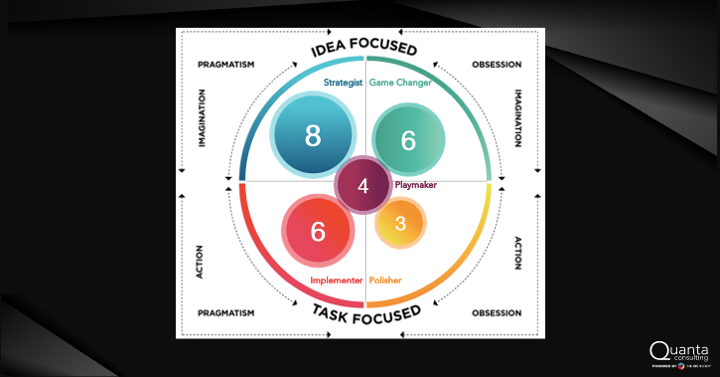Discover your REAL why
"Human behaviour is dependent in every instance on two things. Potential energy and probability. And if you know these two you will have a distinct competitive advantage."
by John Raddall
Humans are complex and often unpredictable creatures. No wonder organisations are trying to eliminate them through technology!
However there is good news for those of us who do not wish to be replaced by a microchip. Much of the emerging leadership theory is now focussing on the need for employees to be happy, working in a safe environment where they can maximise their potential. And of course this makes absolute business sense.
This places new urgency on best matching the individual to the role.
This is how we have approached this challenge.
We have always viewed the individual, not as a fixed or fully 'knowable' unit, but rather as an 'unknowable' unit with attached probabilities. (This is why we don't use personality type assessments, which are little better than horoscopes.) Instead every individual is capable of an infinite set of feelings and related actions, triggered by the environment.
Worded differently we never think or do the same thing twice. We are continuously thinking and doing things 'for the first time.' Hannah Arendt, brilliant philosopher and journalist, famous for her coverage of the Eichmann trial and her term 'the banality of evil' covers this with a skill not shared by many others.
She says that scientists will describe something that is unknown as 'infinitely unpredictable' whereas the rest of us would say that something is a miracle.
Thus every thought or action you have is 'infinitely unpredictable', a miracle that is the first step in a new evolutionary pathway.
However what every person does have is a probability wave, the product of inherited DNA and the sum of all environmental influences leading to all our values, attitudes and beliefs. Thus based on experience we can predict that a person is more likely to say this rather than that, and do this rather than that. But we can never know for certain.
It helps if we have a simple and practical tool. And we do in the form of the GC Index which gives us an accurate picture of a person's probability wave, combined with their unique energy potential, and where they prefer to make an impact.
The example below shows the individual's five energy proclivities and the extent to which there is energy or passion attached to each proclivity. This powerful data, although shown in a static two-dimensional diagram, gives us the ability to convert it into an emergent and four dimensional probability wave. (Shown in the diagram above.)
In the example the individual is a Strategist/Game Changer. Thus given a choice this person will choose to think and act from this position, and not for example as a Polisher or Playmaker.
This new probability wave has massive potential for both the individual and the organisation.
For this individual it is the knowledge of their own probability wave and to find work and projects that allow maximum use of the Strategist and Game Changer proclivities. And to avoid roles that require an emphasis on the other proclivities.
A key point to consider is that a proclivity does not mean skill or competence. Thus this individual could well be competent in a role focussing on detail and Polishing, but without room to express the preferred proclivities, the individual will be more stressed and less motivated, in spite of a generally happy work environment.
For the organisation, not knowing the individual's Probability Wave, is a case of the blind leading the deaf. Knowing the Probability Wave however will allow the organisation to maximise the potential of the individual and increase organisational productivity.
And for both the individual and the organisation, knowing the individual's Probability Wave forms a new and more intelligent foundation for continuous coaching and development.
Simon Sinek has successfully popularised the concept and importance of a company's 'Why'. Based on his original analysis of Steve Jobs and Apple, Sinek's thesis is that people buy not what you do, but why you do what you do.
Our expanded thesis is that each individual has a core and deeper 'Why'. And knowing this 'Why' forms the basis of the potential magic between the individual and the organisation.
Given that this technology is now available, why would you not determine the Probability Wave of every leader and every employee?
Comments 4
By accepting you will be accessing a service provided by a third-party external to https://quanta.consulting/


